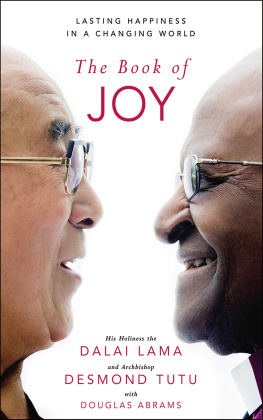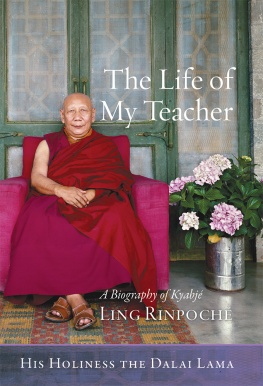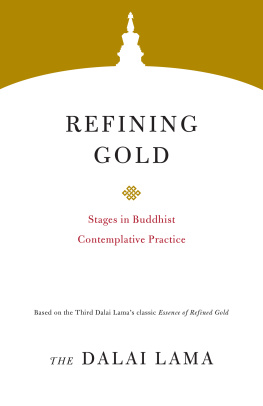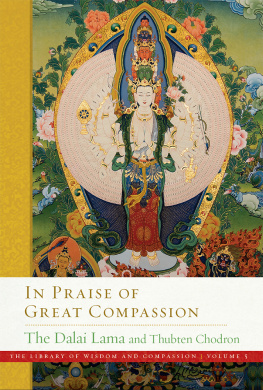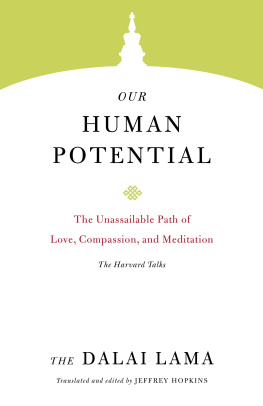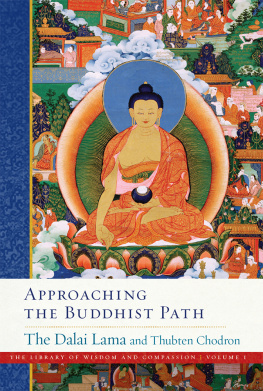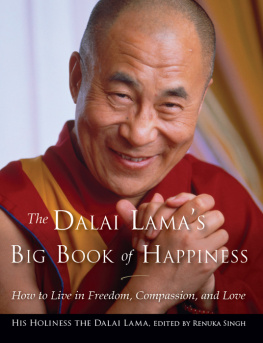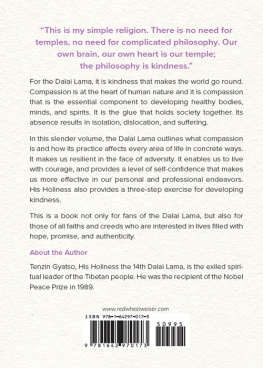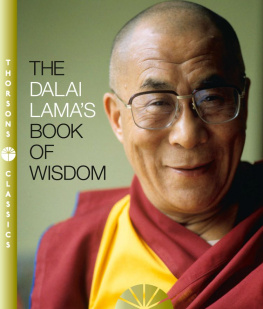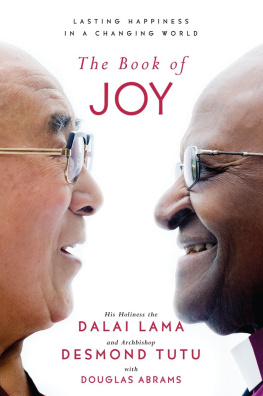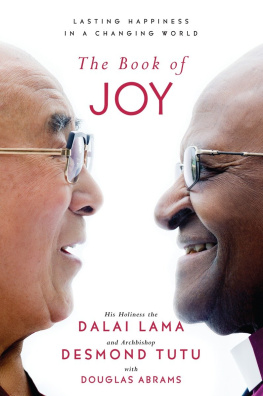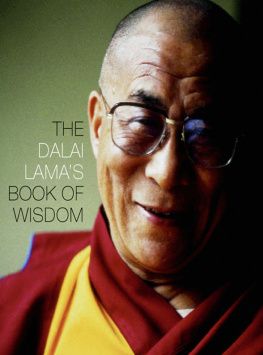DEVELOPING MENTAL IMMUNITY
During the week, as the Dalai Lama and the Archbishop joked about who got up too early and who was praying and meditating too much, it was clear that both believed strongly that spiritual practices were the essential ground of their being, sustaining and supporting them through their lives.
These daily times of prayer and meditation kept these two masters in spiritual alignment. I thought about what the Archbishop had said about the even greater importance of these practices for those who are not spiritual teachers but who must live and die in the blur and buzz of the marketplace. During the week, we had had a chance to discuss some of the spiritual practices that help to cultivate and sustain their joy.
Here we present some simple practices that can help overcome the obstacles to joy and support the eight pillars of joy. We have bookended this section with practices that Tibetan Buddhist monks typically do at the beginning and end of each day. The other practices can be tried on a regular basis or when needed. Like physical exercises, spiritual practices are not ends in themselves. They exist to support our mental health and mental immunity. The more we practice, the more we benefit. There is no spiritual competition. Do whatever you need to adapt them to your life for maximum benefit. (Remember the Dalai Lama adapting his morning practice to accommodate his aging knees.)
As the Dalai Lama said, he finds the science very motivating when he is trying to decide whether to wake up or hit the snooze button. Earlier we mentioned Daniel Siegels explanation of the brain on meditation. It seems that we are literally using our attention and awareness to establish neural firing patterns that help the brain avoid the destructive reactivity that the Dalai Lama said was so toxic to our mental and physical health. Many of these practices appear to integrate and harmonize the brain so that we can respond to the inevitable challenges of life with less fragmentation and more integration, less fear and anger and more ease and joy.
In our age of instant gratification, any information can be googled in a matter of seconds, but real knowledge and wisdom take time. These practices reward and deepen through continued effort. Usually when we start meditating or praying, we can experience what the Archbishop has called spiritual sweets, or the tingling and calming that comes from beginning to pay attention to our inner life. Like sweets, these are tasty, but the real benefits occur as we create a temporal container into which we can pour our heart and soul as we experience the joys and sorrows of life.
The nature of contemplative life is that it is very personal, and not all practices will work for all people. Find what works best for you. What is presented here are simply sample practices, including many that the Dalai Lama and the Archbishop use. We hope these will inspire your own practice.
MORNING INTENTION SETTING
Every conscious action begins with intention, which is simply setting goals. Many Tibetan monks do this each morning as a way of preparing their mind and heart for how they wish to face the day. They also check in with their intentions regularly, when preparing to sit in meditation or when undertaking any important task. Another way to focus your intentions is to read short inspirational passages that support your highest ideals. The Archbishop celebrates the Eucharist each morning, which involves reading (and pondering) Biblical passages. He observes the liturgies of the hours (morning, noonday, and evening prayer), for which there are a cycle of designated readings. He also likes to read passages from the great mystics to guide his heart and mind.
- Sit comfortably, either on a chair with the soles of your feet on the ground or cross-legged. You can also do this exercise while still lying in bed before getting up in the morningafter the alarm goes off and before the rush of the day has begun. You can rest your hands on your legs or on your belly.
- Close your eyes and take several long breaths through your nose. Feel your stomach rise and fall as you breathe from your diaphragm.
- Now ask yourself: What is my hearts desire? What do I wish for myself, for my loved ones, and for the world? Our deepest desires usually lie beyond our temporary wishes and wants. They are likely to involve living with profound human values that lead to our greatest happiness, calling us back to our place within the fabric of life. The Dalai Lama has a simple way of testing our intentions: Is it just for me, or for others? For the benefit of the few, or for the many? For now, or for the future? This litmus test can help guide us toward what we truly wish for.
- Then state your intention for the day. For example: Today may I greet everyone with the love that is in my heart. Or Today may I be less judgmental. Or Today may I be patient and loving with my children. It can be specific or it can be general. If you do not know your intention, you can repeat the following four lines adapted from the traditional Tibetan prayer of the Four Immeasurables, which has guided many on their journey to more compassion and greater happiness:
- May all beings attain happiness.
- May all beings be free from suffering.
- May all beings never be separated from joy.
- May all beings abide in equanimity.
OVERCOMING THE OBSTACLES TO JOY
Focus and Stress ReliefA Breathing Practice
Our breath is so important as a focus of spiritual practice in many religious traditions because it is the hinge between our self and the world. Our breath is internal, but it is also external. Breath is also both voluntary and involuntary. It is therefore an ideal doorway through which we can develop our self-cultivation. Focus, as you may remember, is so important that neuroscientist Richard Davidson found that one of the four neural circuits of well-being was dedicated to our ability to focus the mind. Simply observing quiet time, which the Archbishop maintains in the predawn hours, afternoon, and evening, is another way to focus our mind, relieve stress, and concentrate on what matters most.
- Find a quiet place where you can practice consistently. This way the physical spacea room, a corner, a cushionwill help signal to your body that this is a time for your practice.
- Sit comfortably. If you are sitting on a cushion or chair, try to lean slightly forward, away from the back of the chair so that your back will be straight. If you have chronic back pain, adjust as necessary.
- Close your eyes or keep them slightly open in a restful position.
- Place your hands gently on your knees or in your lap.
- Focus your attention on your breath.
- Breathe in deeply through your nose as your belly expands. As a jug of water fills from the bottom, your lungs should also fill from the bottom.
- Breathe out slowly.
- On each inhalation you can think in, and on each exhalation you can think out. Alternatively, you can count each breath after each exhalation.
- You can count out five to ten breaths and then repeat. If you lose your focus and your mind begins to wander, as minds do, just gently bring your attention back to your breath. You can start by doing this for five to ten minutes and extend the time as your practice develops.
- If you are feeling particularly stressed, you can imagine each breath bringing in calming cool air and it spreading throughout your body. Then, as you release your breath, you can imagine the stress leaving your body from the neck, shoulders, back, tummy, or wherever you tend to hold on to stress.

